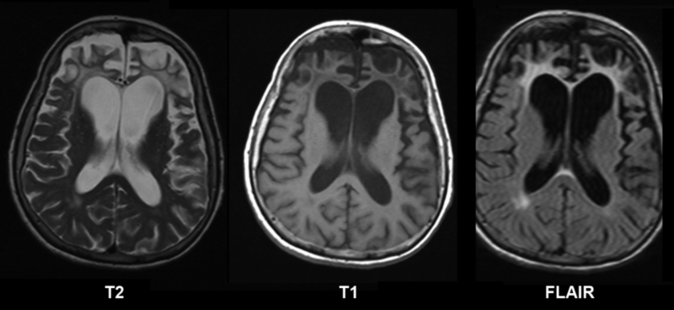Frontotemporal Dementia
This article is currently under review and may not be up to date. Please come back soon to see the finished work!
Description[edit | edit source]
The term “Pick’s Disease” (PiD) was named after Arnold Pick for his initial description of focal gross atrophy of the frontotemporal lobes in a patient with progressive language and behavioral disturbances [1]. Pick’s disease is a rare neurodegenerative disorder, estimated to be 10 times less frequent than Alzheimer’s disease, even in regions with high prevalence. It was first clinically described by Pick in 1892, a German neurologist, in a woman with lobar brain atrophy who suffered from pre-senile dementia with dysphasia [2]. Current knowledge indicates that PiD is a member of a group of heterogeneous neurodegenerative disorders with similar or related histopathologic and clinical features [3]. Pick Disease,” or “Pick’s Disease” is the name given to one form of a larger group of diseases now called the Frontotemporal Dementia (FTD) [4] .
Causes[edit | edit source]
Pick’s disease, along with other FTDs, is caused by abnormal amounts or types of nerve cell proteins, called tau. These proteins are found in all of our nerve cells. They are usually stored in Pick bodies or Pick cells causing the brain tissue to shrink and leading to dementia [5].
Symptoms[edit | edit source]
Pick's Disease is a progressive dementia charaterized by progressive changes leading to impairment of intellect, memory and language [5]. The following symptoms may be experienced:
- Behavorial and emotional symptoms such as:
- Abrupt mood changes
- Compulsive or inappropriate behavior
- Depression-like symptoms like disinterest in activities of daily life
- Withdrawal from social interaction
- Poor social skills
- Difficulty in keeping a job
- Poor social
- Poor personal hygiene
- Repetitive behavior
- 2. Language and neurological changes such as:
- Reduced writing and reading skills
- Repeating what you are told
- Inability or difficulty to speak or trouble to understand a speech
- Shrinking vocabulary
- Accelerated memory loss
- Physical weakness
References[edit | edit source]
- ↑ Irwin DJ, Brettschneider J, McMillan CT, Cooper F, Olm C, Arnold SE, Van Deerlin VM, Seeley WW, Miller BL, Lee EB, Lee VM. Deep clinical and neuropathological phenotyping of Pick disease. Annals of neurology. 2016 Feb;79(2):272-87.
- ↑ Dickson DW. Pick's disease: a modern approach. Brain pathology. 1998 Apr;8(2):339-54.
- ↑ Hu W, Luo JJ. Research Advances in Pick’s Disease: A New Biomarker Candidate. J Neurol Neurophysiol. 2013;4:e112.
- ↑ What is Pick’s Disease? Available from: https://www.brightfocus.org/alzheimers-disease/article/what-picks-disease (Accessed, 01/08/2021).
- ↑ 5.0 5.1 Pick Disease of the Brain: Causes, Symptoms, and Diagnosis. Available from: https://www.healthline.com/health/picks-disease#symptoms (Accessed, 01/08/2021).







